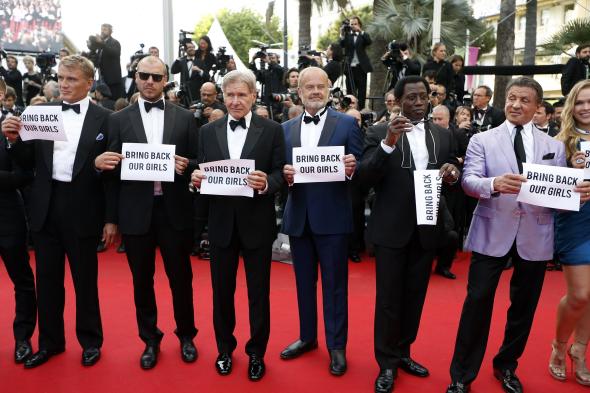The Less You Know

Photo by Valery Hache/AFP/Getty Images
The global spread of the #BringBackOurGirls campaign earned it comparisons to the #StopKony campaign of two years ago and reignited a debate over the efficacy of hashtag activism. The original Kony 2012, the most successful viral video in history, and the accompanying #StopKony social media campaign, succeeded in their goal of making Kony and the Lord's Resistance Army internationally infamous. But the video, produced by NGO Invisible Children, was criticized almost immediately for fudging basic facts of geography and chronology and failing to provide viewers with any social, political, or economic context for Kony's violence
The viewer of Kony 2012 could be left with an exaggerated view of Kony’s current strength and influence, be convinced that the only reason he hadn't been caught was that not enough people were aware of him, and miss the fact that a beefed-up international effort to track him down—which the U.S. eventually undertook—would entail further militarizing an already unstable region and supporting governments accused of human rights abuses of their own.
A new study of the Kony 2012 phenomenon by three experimental psychologists suggests—depressingly—that the oversimplification of the message in the original video was exactly the reason it was successful. As the authors, Daniel Sullivan of the University of Arizona, Mark Landau of the University of Kansas, and Aaron Kay of Duke University, write, “identifying a clear enemy induces feelings of moral outrage, inspiring a desire to take efficacious action against the enemy.”
The paper quotes Invisible Children’s Jason Russell, the video’s director, telling CNN that “Because of the zeitgeist of the culture and the world, we need an enemy. ... We need to know what the worst is.” The video set up Kony as a simplified figure of evil and portrayed “complex problems— civil war, widespread injustice, and structural imbalance in central Africa, as well as between Africa and the rest of the world—in simple terms as the product of one man’s misdeeds.”
A month after the original video, Invisible Children released Kony 2012: Part II – Beyond Famous. In response to the criticism the original video received, the sequel was more nuanced and “acknowledged more of the complexity regarding the situation in central Africa.”
The second video wasn’t nearly as popular, and a planned “cover the night” event scheduled for a few weeks later, in which volunteers were supposed to plaster Kony’s face throughout cities around the world, turned out to be a bit of a dud.
The authors suspect that just as the simplicity of the Kony-as-enemy narrative produced the moral outrage that fueled the viral success of the original video, viewers began to lose interest in the campaign as soon as they learned more about the complexity of the situation. (Russell's very public mental breakdown also didn't really help the campaign's credibility.)
This hypothesis was tested empirically, with subjects being shown both of the Kony 2012 videos and their reactions gauged. The authors found that “although feelings of moral outrage and determination to act increased relative to baseline when participants watched either Kony 2012 or Kony 2012—Part II, the magnitude of this effect was considerably larger among participants who watched the first video.”
Viewers of the second video were also had a more favorable reaction when shown articles critical of the campaign’s motives. (I was happy to see that this blog post by Michael Wilkerson, which I posted as editor of Foreign Policy’s Passport blog and which was one of the first critical takes on Kony 2012 published online in the early hours of the campaign, was one of the materials used in the experiment.)
“The first video presented a simple message portraying Kony as a concrete enemy figure, and dramatically increased moral outrage and determination relative to baseline levels, whereas the sec- ond video presented a more complex view of the situation, was less successful at deflecting criticism, and therefore produced a less substantial increase in moral outrage,” the authors write.
Defenders of campaigns like these often say that they can be gateways toward greater understanding of complex global issues. Viewers first get hooked on the moral outrage, then learn more about the underlying conditions that produced the crisis, becoming better-informed global citizens.
This paper suggests that unfortunately the opposite is true. Viewers get interested when they hear about evil monsters like the LRA or Boko Haram that just need to be stopped. When they learn more about the issue and find out that, lo and behold, the world is a very complicated place, that killing the monster won’t be so easy and that there are larger issues in play beyond the monster itself, they lose interest.
In the meantime, Kony’s still at large, the girls haven’t been brought back, and the world is moving on:

